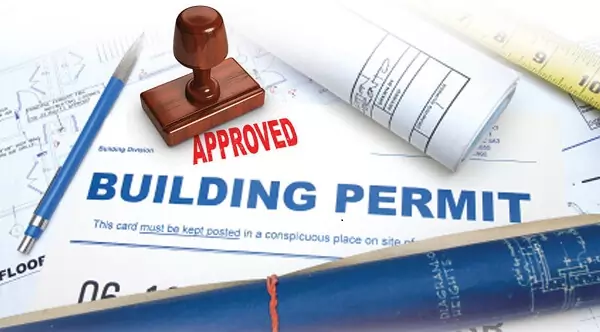What Are Building Permits?
Building permits are more than just bureaucratic hurdles; they ensure construction projects’ safety and legality. Local government authorities issue these permits and signify that your construction or renovation plans comply with local building standards and codes, ensuring public safety and proper land use. For instance, in vibrant cities like Denver, having the correct Denver permits signifies a vital endorsement of your structural intentions, confirming adherence to the city’s unique architectural guidelines and community plans.
Ignoring these permits can lead to severe repercussions. Besides risking safety, non-compliance could invite hefty fines and might even compel the dismantling of the work done. According to Forbes Home Improvement, securing such permits is pivotal—it protects your investment. It assures you that the infrastructure is solid and reliable. Beyond individual security, it plays a crucial role in a broader community defense against substandard construction practices.
Why Do You Need a Building Permit?
The necessity of a building permit transcends the legal obligations it fulfills. Firstly, it is about safeguarding lives by ensuring that construction meets crucial safety codes that prevent hazards such as fires, collapses, or structural failures. Moreover, it bolsters the values of individual properties and entire neighborhoods by ensuring aesthetic harmony and proper land use planning. The Architectural Digest underscores that acquiring permits is not merely about legality but about harmonizing functionality with safety for sustainable urban development.
Without these permits, your project is not just at risk of incurring fines; it might become a liability when it comes time to sell. Real estate transactions often necessitate proof of compliance to validate the structural soundness of a property. Building permits are as much about future-proofing your investment as they are about immediate compliance and construction integrity.
Steps to Obtain a Building Permit
The journey to obtaining a building permit might seem intricate, but understanding each step simplifies the process significantly. A clear roadmap starts with diligent research.
Research Local Requirements
In-depth knowledge of local requirements is indispensable. Each jurisdiction has its distinct sets of building codes and ordinances, so visiting local government websites or offices is essential to understand what applies specifically to your project. Recognizing which permits you need is the cornerstone of a successful application.
Preparation of Documents
Once familiar with the requirements, the next step is to gather and prepare all necessary documents. These include detailed plans of the intended construction, such as architectural drawings and site plans detailing location specifics and any intended structural changes. This documentation should fully meet the standards outlined by your local authority and be neatly organized for easy review.
Submission and Approval
With documentation in hand, the next move is to submit it to the local permitting office. This process can vary widely depending on the size and impact of the proposed changes. Communication is critical here; be prepared for necessary revisions or potential attendance at hearings to defend your proposal. Being responsive and prepared can smooth the path to quicker approval.
Undergo Necessary Inspections
Application approval is just the beginning. As the project progresses, different phases will likely require inspections. These inspections ensure that what is being constructed complies consistently with submitted plans. Schedule these inspections immediately to avoid project delays and ensure ongoing compliance.
Understanding the Costs Involved
Another crucial factor is the financial dimension of building permits. Permit fees can vary dramatically, often linked to the project’s total cost, complexity, or land area it impacts. It’s not uncommon for fees to include a combination of plan review, multiple on-site inspections, and administrative charges throughout the project’s life.
Understanding these costs upfront can help maintain a comprehensive budget. Some local governments offer online calculators, making estimating fees based on specific variables easier. Strategic foresight can prevent financial surprises and keep the project on budget and on schedule.
How Permits Impact Project Timelines
Building permits are often a significant factor in shaping construction timelines. The approval process may extend from days to weeks, depending on the project scope, regulatory complexity, and efficiency levels of the local permitting office. This phase demands patience, as unforeseen delays can emerge from scrutiny at various administrative levels or public queries.
To accommodate potential delays, you should integrate buffer periods into your project schedule from the outset. Aligning with a reliable contractor or consultant familiar with the local system can further streamline the process, minimizing frustrations while maximizing efficiency.
Common Challenges and Solutions
The path to securing a building permit is seldom free of challenges. Incomplete applications or misinterpreted codes can lead to significant delays. Hiring professionals adept at navigating these complexities could be a pragmatic approach, ensuring compliance while saving time and resources.
Another common barrier includes bureaucratic back-and-forth, which addresses differing interpretations of codes, which sometimes arise in densely regulated areas. Proactive engagement and steadfast follow-up with officials can foster smoother communication and faster resolutions.
Expert Tips for a Smooth Permit Process
Securing your building permit can be more seamless with these expert tips:
- Consult Professionals: Engage with seasoned architects or contractors who understand your local nuances. Their insights can prepare you against unforeseen challenges.
- Thorough Preparation: Meticulously prepare your applications; cross-check for compliance to reduce the likelihood of revisions drastically.
- Maintain Clear Communication: Establish constant dialogue with the permitting authority. This keeps momentum consistent and cultivates rapport.
- Build Flexibility into Timelines: Proactive scheduling with ample contingency times can mitigate disruptions from unexpected procedural delays.
The Future of Building Permits
The future of building permits is poised for digital transformation. As local governments transition to more advanced platforms, the permit application will become increasingly efficient and transparent. Digital interfaces can enable faster approvals by streamlining submissions and reviews, reducing paperwork, and allowing quicker status updates.
These technological advancements herald an era where the permitting process supports rather than hinders developments, fostering innovation while maintaining rigorous safety standards. Municipalities embracing such innovations will likely be ahead, promoting sustainable urban evolution.
Keep an eye for more latest news & updates on Essential Tribune!








